2019 Dodge Challenger R/T Scat Pack Widebody Review

FAST FACTS
| Engine: | 6.4-liter V8 |
| Output: | 485 horsepower, 475 pound-feet of torque |
| Transmission: | Six-speed manual |
| U.S. Fuel Economy (MPG): | 14 city, 23 highway, 17 combined |
| CAN Fuel Economy (L/100 km): | 16.7 city, 10.4 highway, 13.9 combined |
| U.S. As-Tested Price: | $52,065 including $1,395 for delivery |
| CAN Estimated Price: | $67,420 |
There’s one in every crowd.
I’m talking about that friend who defies convention, eschews cultural norms. He’s loud, rude and often quite crude, unafraid of cracking a dirty joke in mixed company. Almost certainly not the person you’d take to a fancy restaurant, he’s nonetheless a one-man carnival and the guy everyone else wants to hang out with.
Get a Quote on a New Dodge ChallengerIn many ways, the Dodge Challenger is that sort of rowdy companion. With Hemi power under the hood, this old-school coupe is boisterous and bellicose, but also an absolute blast, whether you’re ripping down a country two-lane, lighting up the rear skins or just blipping the throttle while sitting in rush-hour traffic.
Scat Pack W-I-D-E-B-O-D-Y
Appealing to a broad array of customers, this retro-styled two-door is available in a host of variations. You can get an entry-level Challenger with six-cylinder power, one with all-wheel drive and, of course, still more versions with V8s under their hoods, right up to the race-ready Hellcat Redeye model, which packs just shy of 800 horses.
Somewhere in the middle is the R/T Scat Pack Widebody. This car features a larger and commensurately more powerful 6.4-liter Hemi under its broad, flat hood, a nice upgrade over the entry-level 5.7-liter V8, plus it gains a host of other amenities over lesser Challengers.
Certainly, one of the most obvious changes here is the addition of special fender flares. Borrowed from Widebody Hellcat models, these bolsters broaden the car’s shoulders by 3.5 inches (89 millimeters), giving it an even more imposing look.
SEE ALSO: 2019 Bullitt Mustang Review
Naturally, upgraded wheels and tires fill those bulging cutouts nicely. This car rolls on monstrous 20-inch rims that measure 11 inches across. These forged aluminum units are wrapped in gummy Pirelli tires for extra traction in most conditions, though certainly not cold weather or snow. You’ve been warned if you want to pilot this machine all year and live in a region that experiences four distinct seasons.
Tucked behind those spokes are improved brakes provided by Brembo. Six-piston calipers are on display up front while four-pot units slow the rear wheels down. This setup can eradicate 60 miles an hour in as little as 108 feet, admirable performance for a car that weighs some 4,308 pounds (1,954 kilograms). In modern internet parlance, you might describe this car as thicc or even a heckin’ chonk, because she’s a big girl in nearly every dimension.
Up front, you’ll find standard illuminated air-catcher headlamps that feed the engine bay with a copious supply of fresh atmosphere.
As for the chassis, engineers made plenty of changes as well. Compared to non-Widebody Challenger R/T Scat Pack models, this car benefits from stiffer front springs and retuned shock absorbers. The stabilizer bars are larger as well, plus they’ve been fitted with adaptive dampers. Managing aerodynamics is a front fascia with an integrated splitter and its rear spoiler has been borrowed from the Hellcat for improved downforce at speed.
Princely Pricing
An entry-level Challenger will run you about $28,000. A Hemi-powered R/T variant can be had for around 35 grand. Stepping up from there, the Scat Pack Widebody model kicks off at 46 large and change.
The example tested here checked out for $52,065, including $1,395 in destination fees. Options that added to that overall figure include red brake calipers, summer tires, various driver aids and an interior upgrade package.
392 Reasons to Fall in Love
This car is powered by a naturally aspirated 6.4-liter V8. For those of you fluent in muscle-car, that equates to a healthy 392 cubic inches, gigantic by 21st-century standard, but relatively small compared to what was offered in the 1960s when big-block Mopars, hopped-up Pontiacs and thundering Fords ruled America’s roadways.
With high-flowing, hemi-inspired cylinder heads this powerplant barks like the engines from Detroit’s glory days, cranking out 485 horsepower with 475 pound-feet of peak torque. That’s enough to annihilate the quarter mile in 12.1 seconds at speeds around 112 miles an hour.
Getting that many kibbles and bits out of a two-valve engine isn’t necessarily easy, likely requiring a fairly saucy camshaft. And a gnarly bump-stick is probably why this engine shivers and vibrates a bit at idle. With fewer mechanical components in play, it simply doesn’t have the same control over its valvetrain like “more modern” multi-cam engines do.
It’s No Spring Chicken
The Challenger and its siblings including the Chrysler 300 and Dodge Charger share derivations of FCA’s LX platform, an architecture that harkens back to the dark DaimlerChrysler days, long before Cerberus or Fiat entered the corporate equation. In simple terms, this means the car’s bones are anything but fresh.
Many parts of the Challenger feel outdated, and not in a fun, retro way like its exterior styling. The interior is nice, but not great, with large swaths of marginal-quality plastic.
The analog gauges are stylish, but a cluttered layout and small typeface can make them quite difficult to read, especially on the go. Thank goodness for the digital display between the speedometer and tach!
You’ll find a pair of bucket seats up front. Trimmed in red and emblazoned with a bumblebee emblem they look the muscle-car part, but are a too squishy and are not particularly comfortable.
Likewise, the shifter controlling our tester’s six-speed manual gearbox looked totally retro, but while driving, it shook around in its boot like an overly excited Labrador’s tail. The effort required to stir that tough-as-nails Tremec TR-6060 also proved to be annoyingly high.
Despite its outsized dimensions, the Dodge Challenger isn’t as spacious as you might expect. Trunk volume measures a respectable 16.2 cubic feet (459 liters), though the lift-over height is towering at more than 33 inches (843 millimeters). The noticeably smaller Mustang offers 13.5 cubes (382 liters) while Chevy’s Camaro is graced with a paltry 9.1 (258 liters).
But perhaps most ridiculous of all is this car’s foot-activated parking brake. The loud swoosh-whap sound it makes when released is even more absurd. Can we have a proper handbrake, please?
Of course, despite the Challenger’s noticeable faults it looks great and sounds even better, plus it does one important thing its crosstown rivals, the Camaro and Mustang don’t have a hope of achieving. It can haul four life-sized adults in reasonable comfort. Even small children are a tight fit in the back of that Chevy and Ford.
The Drive
The Challenger R/T Scat Pack Widebody rumbles like an earthquake from the instant you crank ‘er over, the reduction-gear starter’s high-pitched whine recalling classic Mopars. Underway, that engine is just as intoxicating, emitting a deep rumble from its duet of squared-off exhaust tips. The car is just loud enough to be fun without wearing on one’s nerves.
This burly 6.4-liter Hemi pulls like a freight train in lower gears, building revs frenetic enthusiasm. Despite the relatively large displacement it blitzes to redline practically in an instant. Unless you’re hitting the dragstrip every weekend there’s really no need for the Hellcat. This machine offers ample performance without making it feel like you’re going to die if you explore more than half the accelerator pedal’s travel.
It may offer plenty of low-range vigor but in higher gears there’s nowhere near as much punch. Nail the accelerator in sixth or even fifth gear at highway speeds and not a lot happens. My humble EcoBoost Mustang offers far more impressive top-gear acceleration. Still, if you’re in a hurry just hit the clutch and stir that Tremec a little to enjoy much more rapid acceleration.
Of course, if you don’t want three pedals you can always grab for the available eight-speed automatic transmission. It’s a $1,595 extra, though opting for this gearbox does allow you to avoid paying a grand in gas-guzzler taxes, dropping the fee to a borderline-cheap $595.
SEE ALSO: 2019 Chevrolet Camaro Turbo 1LE First Drive
With close to 500 pound-feet of torque on tap, it’s no surprise this Challenger’s clutch is relatively heavy with a surprisingly short range of travel. Given the meatiness, it’s no fun to operate for long periods in heavy traffic, but it’s still preferable to a super-light clutch pedal where you can’t easily discern the engagement point.
The Widebody’s standard three-mode adaptive suspension allows you to finetune its on-road behavior, transforming it from a squishy teddy bear to a much leaner, tighter-feeling machine. Unfortunately, the Challenger’s overall bulk cannot be hidden. This is always a large, imposing and relatively heavy vehicle.
During my week with this car it averaged around 18 miles per gallon in real-world driving, an impressive figure for something this bulky and powerful, doubly so considering I endured several hours of stop-and-go driving during that period and cracked the throttle plenty of times just to hear that Hemi howl. According to the EPA this car should return 14 miles per gallon (16.7 l/100 km) in the city, 23 (10.4 l/100 km) on highway drives and 17 mpg (13.9 l/100 km) combined.
The Verdict: 2019 Dodge Challenger R/T Scat Pack Widebody Review
With its rowdy personality and retro good looks, the Dodge Challenger is rather unlike any other car on the road today. It’s far more livable than a Mustang or Camaro, yet it still delivers plenty of smiles.
An aging interior and other annoying downsides do detract from the overall experience, though in a weird way these flaws almost make it more enjoyable. This car isn’t as good as it should be, but it almost doesn’t matter because it’s easy to love.
Discuss this story on our Dodge Forum
LOVE IT
- Intoxicating rumble
- Hemi performance
- Room for four
- Retro styling
LEAVE IT
- Foot-operated parking brake
- Interior could be better
- Hard-to-read gauges
- Soggy seats

Born and raised in metro Detroit, Craig was steeped in mechanics from childhood. He feels as much at home with a wrench or welding gun in his hand as he does behind the wheel or in front of a camera. Putting his Bachelor's Degree in Journalism to good use, he's always pumping out videos, reviews, and features for AutoGuide.com. When the workday is over, he can be found out driving his fully restored 1936 Ford V8 sedan. Craig has covered the automotive industry full time for more than 10 years and is a member of the Automotive Press Association (APA) and Midwest Automotive Media Association (MAMA).
More by Craig Cole



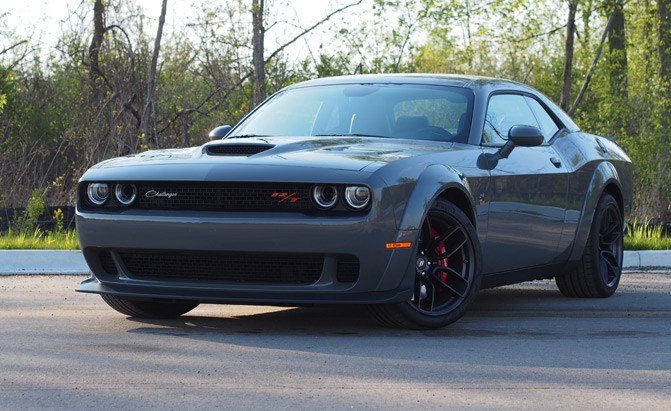
























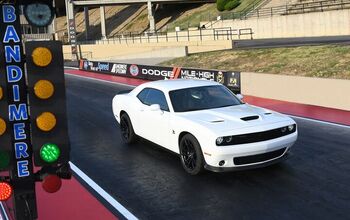
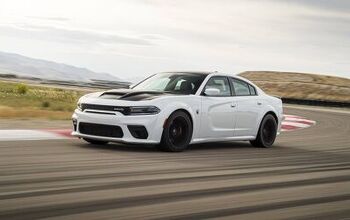

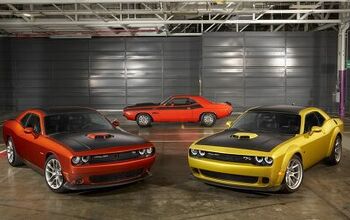
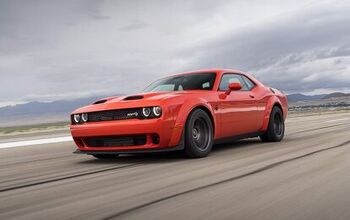










Comments
Join the conversation